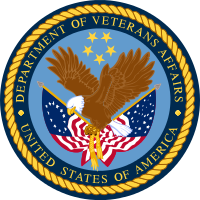 Department of Veterans Affairs - Federal Departments
Department of Veterans Affairs - Federal Departments
|
Year Founded:
1989
|
Employees:
427,172
|
Outlay:
$98B / year
|
Employee Expense:
$38.69B in 2022
|
The Federal Government is broken down into fifteen departments, each of which consists of a number of sub-departments and organizational groups tasked with accomplishing the Department's overall goals.
The Department of Veterans Affairs serves to honor the men and women who have served in our nations armed forces and to assist veterans and their families. At its core, the VA is a military veterans benefits program. The VA was formally established in 1989, however the roll that the Department of Veterans Affairs serves has been around for much longer. After the American Revolutionary War pensions were provided to soldiers who were wounded. In 1834, the first federally owned and operated hospital for veterans was formed. Today the benefits program has been expanded to assist not just veterans but also their families.
Who does the Department of Veterans Affairs hire?
The VA primarily hires nurses, physicians, pharmacists and mental health professionals. These care givers fulfill the Veterans Affairs primary goal of offering superior medical care to our veterans. Because the VA handles sensitive electronic medical records for all their patients there are a large number of computer experts hired by the VA as well.
In 2022, the most common occupation employed by the Department of Veterans Affairs was Nurse at 80,950 employees. The second largest occupation was Medical Support Assistance with 31,833 employees.
VA is based in Washington, D.C. but most employees of the Department of Veterans Affairs work in hospitals around the country providing life changing medical care to wounded and disabled veterans.
History of the Department of Veterans Affairs
The Department of Veterans Affairs was first established on July 21, 1930 but did not become a cabinet-level department until March 15, 1989. Support for veterans of the U.S. Armed Forces had been provided by independent agencies and on an ad-hoc basis before the VA was established. In fact, the first Continental Congress of the United States guaranteed pension for any disabled soldier. Before the VA, medical care was provided to veterans by ordinary state and local hospitals.
After the First World War, Congress created the Veterans Bureau, the Bureau of Pensions for Interior Departments and the National Home for Disabled Volunteer Soldiers. These agencies were consolidated to create the VA in 1930.
The WWII G.I. Bill of 1944 has had a profound effect on the landscape of American life today. The bill has shaped American way of life more than perhaps any other single legislation in American History. The benefits created by the G.I. Bill included low-cost mortgages, affordable loans, free tuition to universities and trade schools, and increased unemployment compensation. The bill applies to all soldiers who have been in active duty regardless of whether they saw combat. The G.I. bill also spurred the creation of federal hospitals to provide care to wounded veterans.
The VA has been an enormous success providing essential services to Americans who have served our nation. However, since before WWII the VA has struggled to provide timely and appropriate service to all veterans. The growing numbers of disabled veterans, longer lifespans and limited budget have all contributed to the bottleneck within the VA.
The Department of Veterans Affairs was formerly an independent agency as the Veterans Administration
Average Pay of an Employee in the Department of Veterans Affairs
Agencies in the Department of Veterans Affairs (2022)
Data Sources
The information provided on these pages is sourced from the Office of Personnel Management (OPM)  Enterprise Human Resources Integration (EHRI)
Enterprise Human Resources Integration (EHRI)  dataset. Postal Service data is managed exclusively by the USPS
dataset. Postal Service data is managed exclusively by the USPS  . All information is displayed unmodified and as provided by the source agency.
. All information is displayed unmodified and as provided by the source agency.
Federal employee salaries are public information under open government laws (5 U.S.C. § 552). FederalPay provides this data in the interest of government transparency — employee data may not be used for commercial soliciting or vending of any kind. Learn more about the FederalPay Employees Dataset here.
Back to List of Departments
Join the our free mailing list to receive an update when 2025 rates are available.
